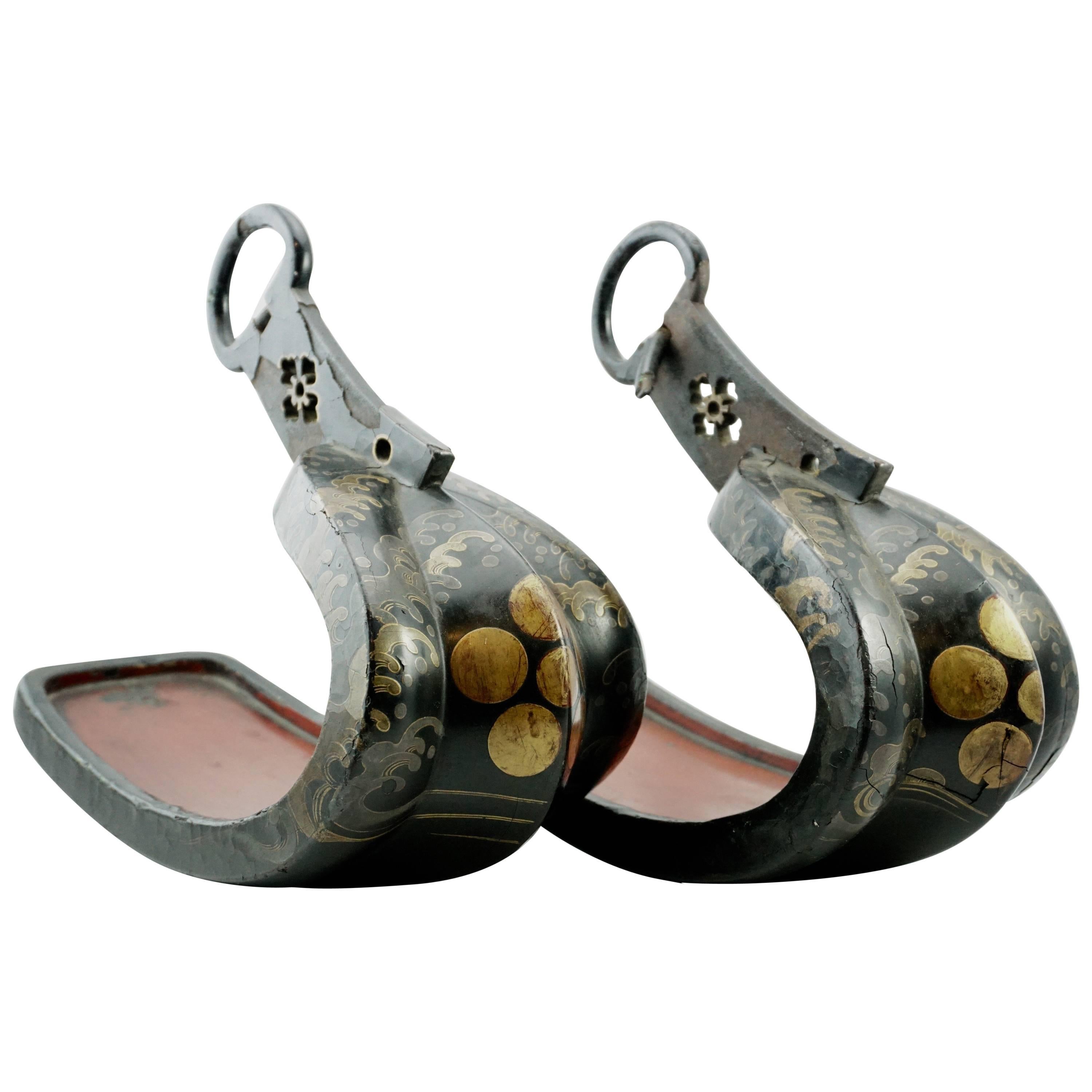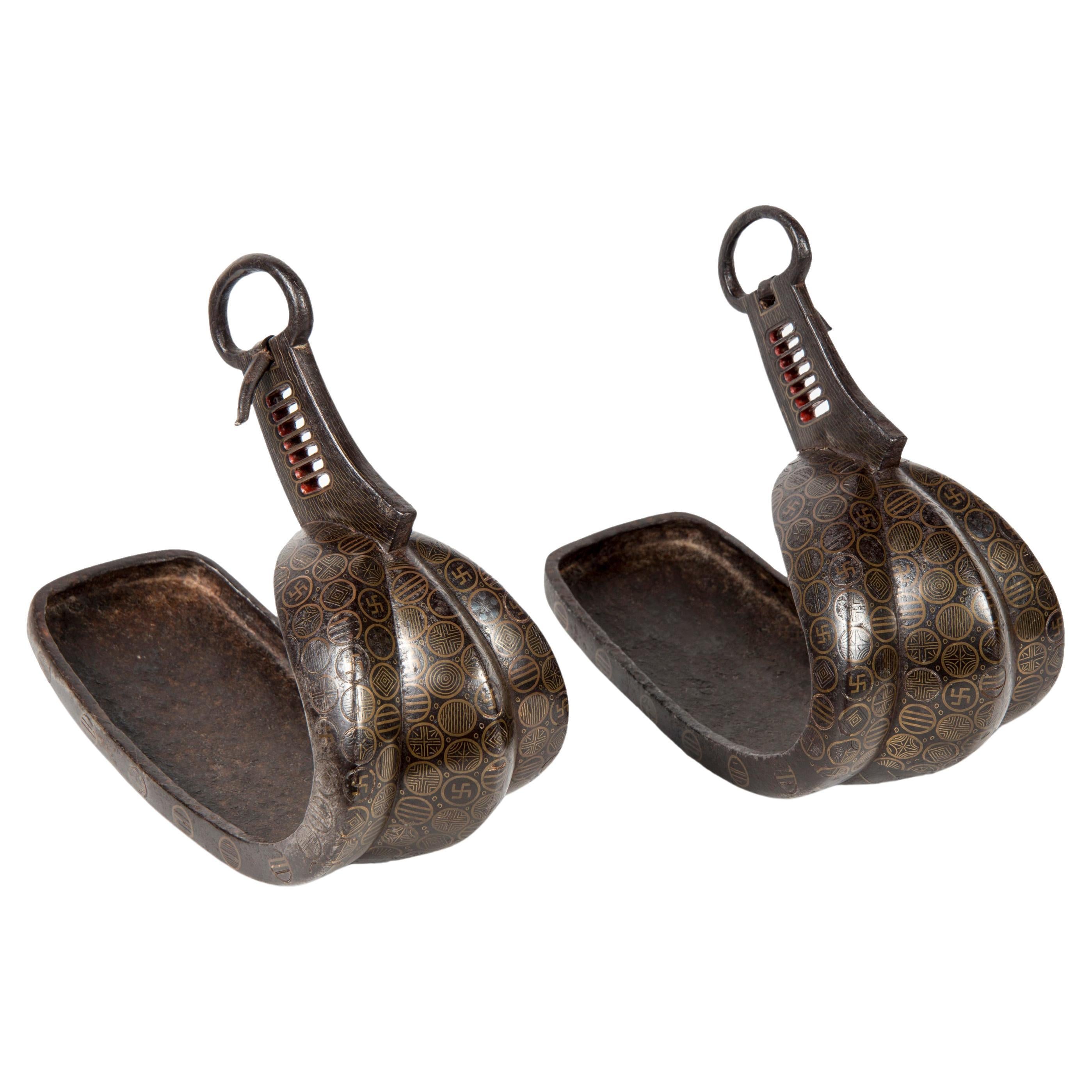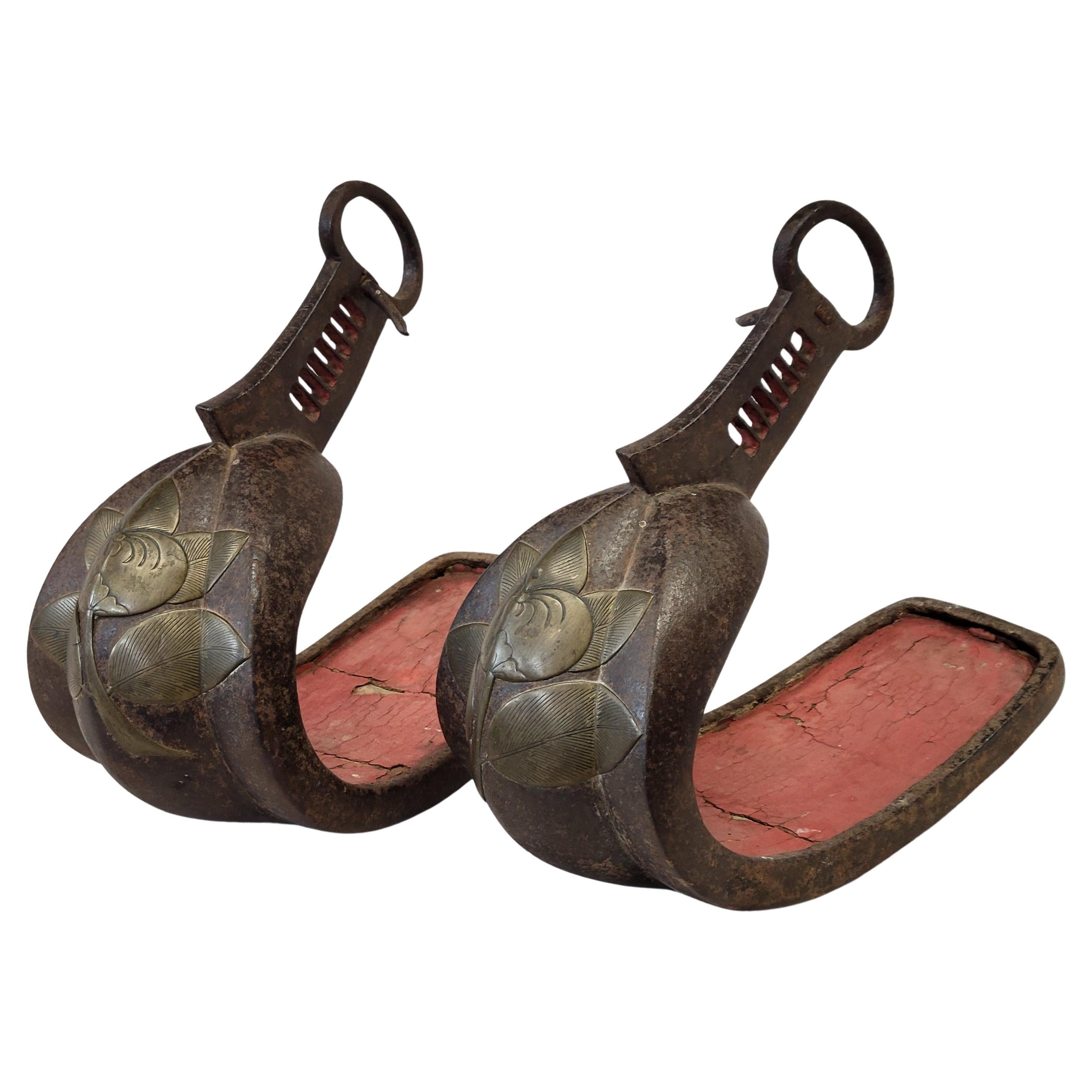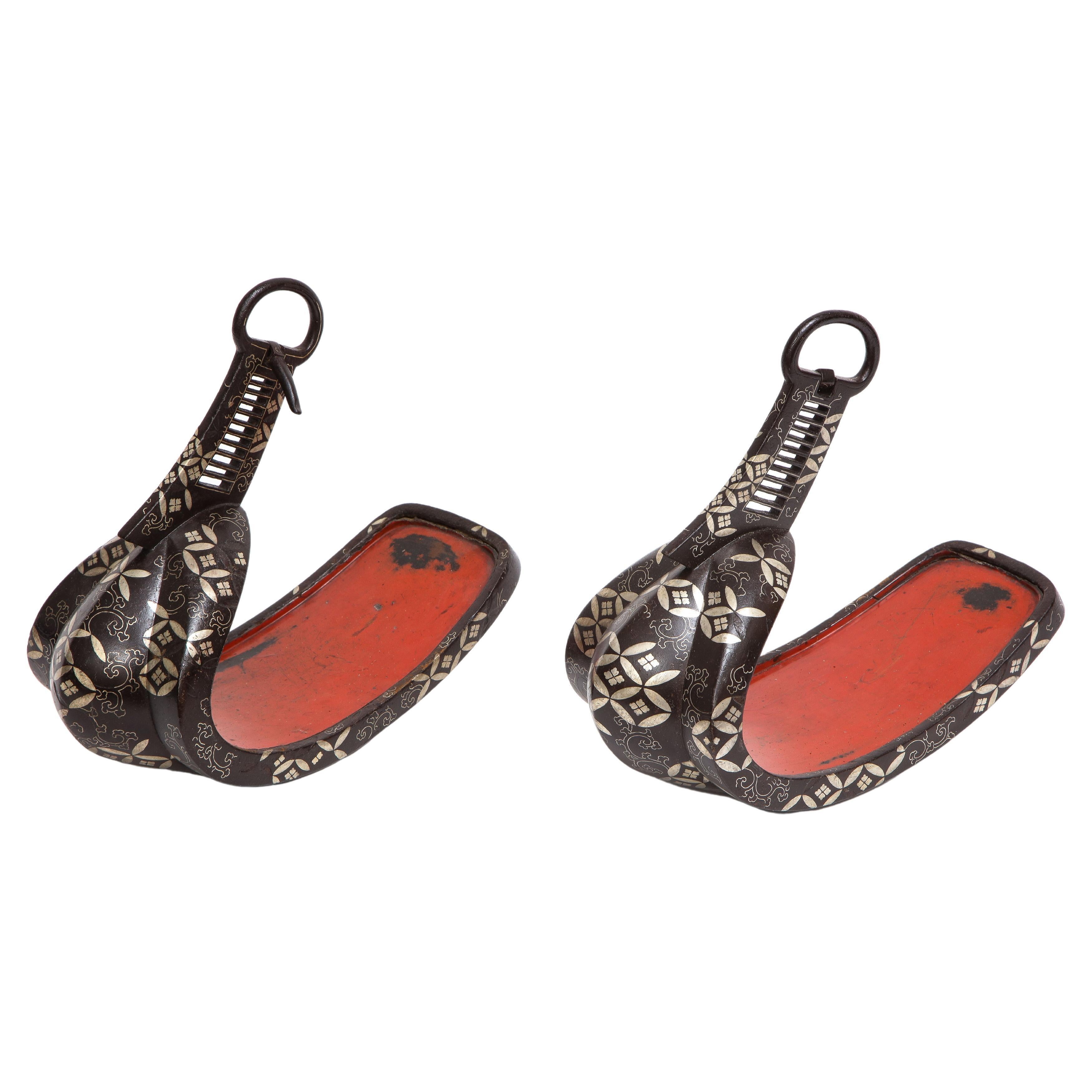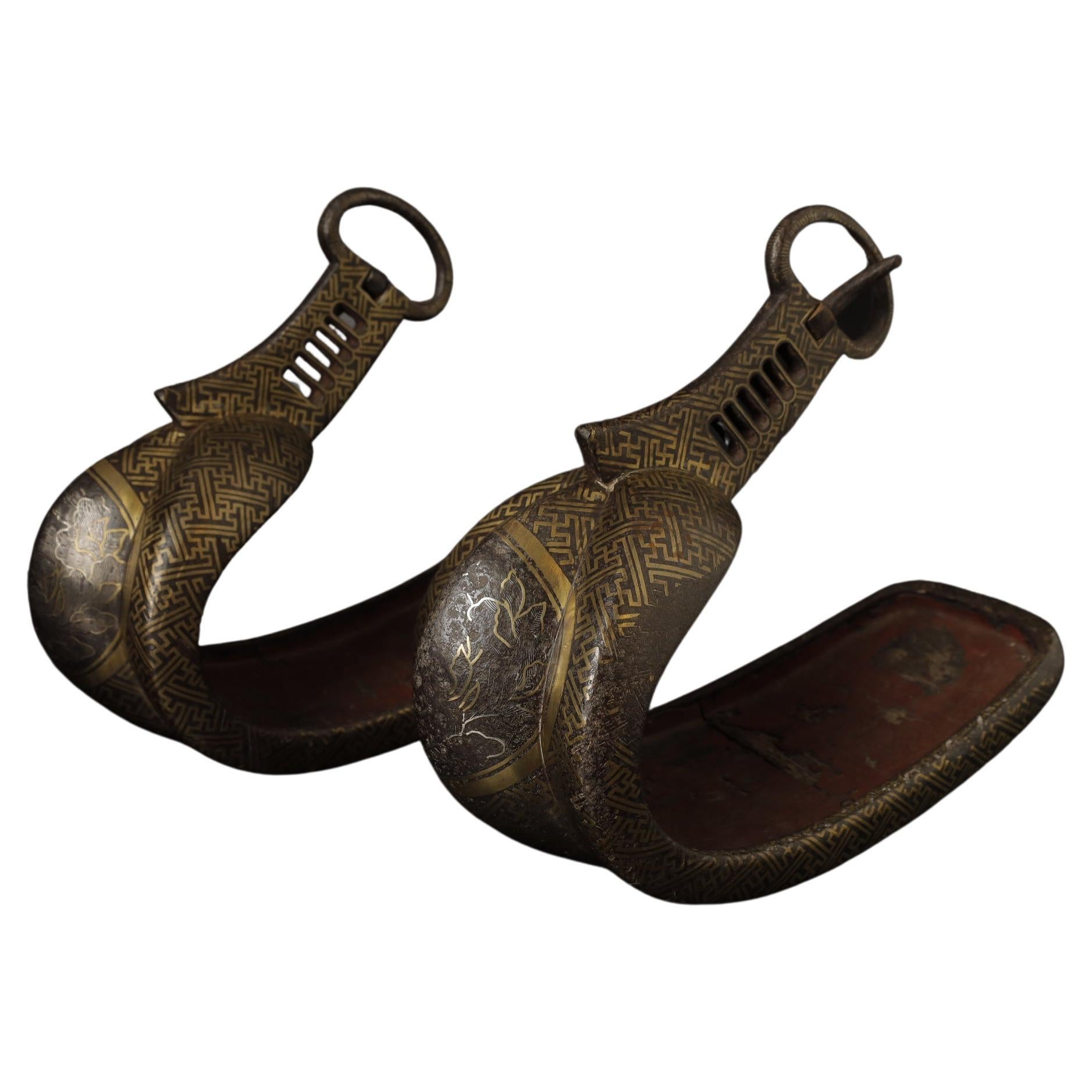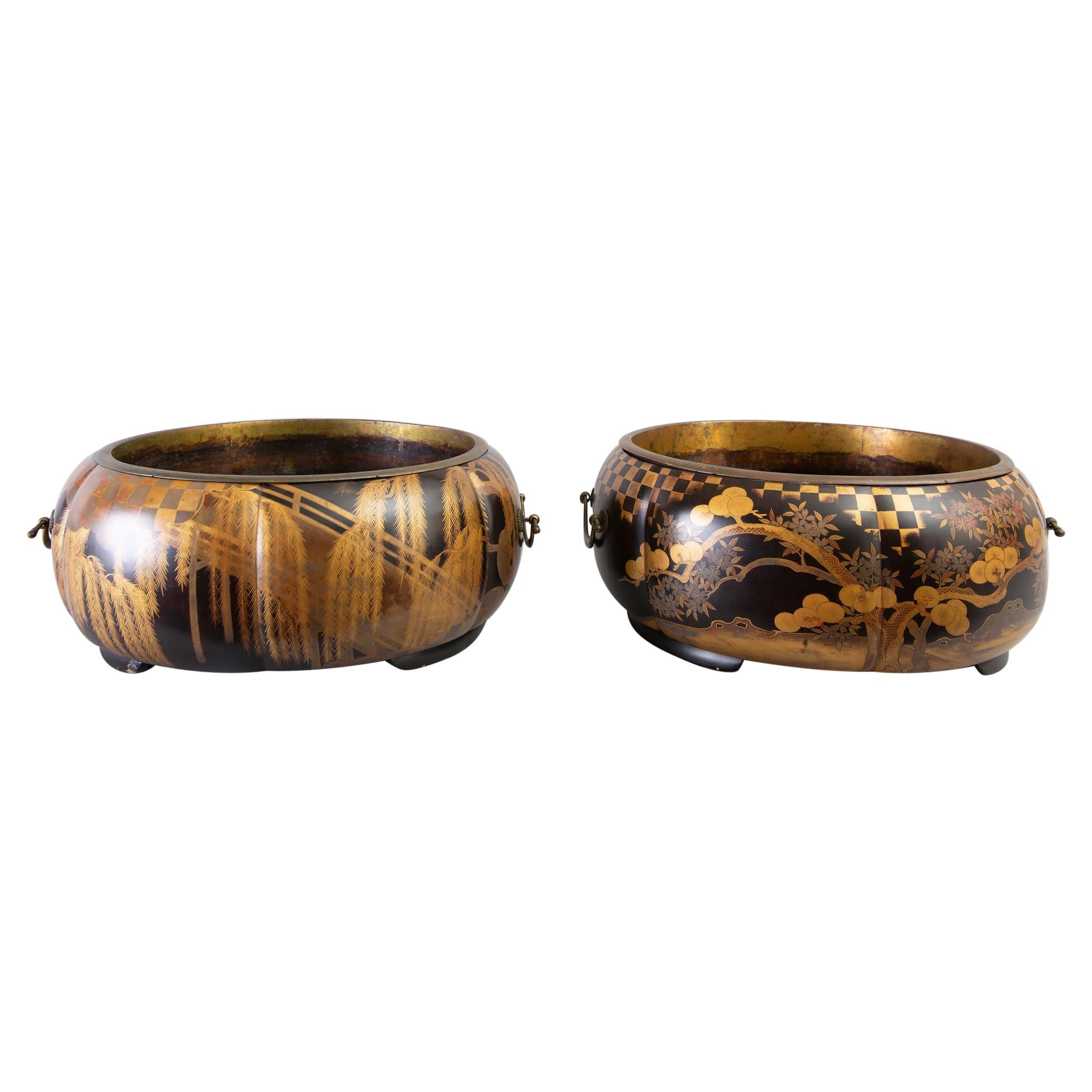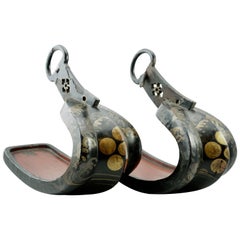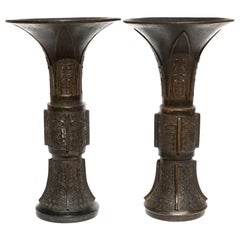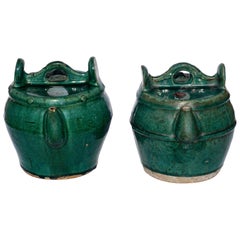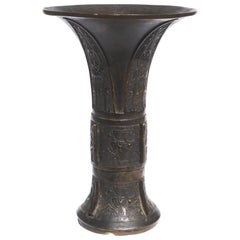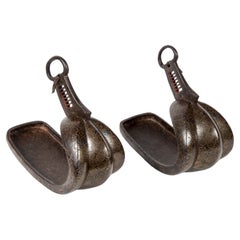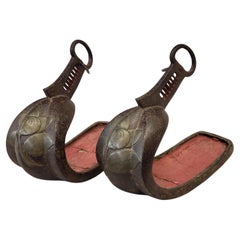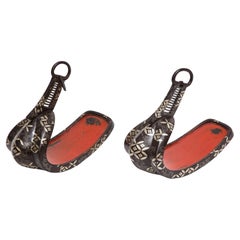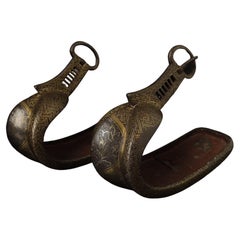Items Similar to Japanese Samurai Abumi Stirrups Lacquer Edo, 18th Century
Want more images or videos?
Request additional images or videos from the seller
1 of 10
Japanese Samurai Abumi Stirrups Lacquer Edo, 18th Century
$2,700per set
£2,048.70per set
€2,342.50per set
CA$3,771.17per set
A$4,193.03per set
CHF 2,189.37per set
MX$51,039.33per set
NOK 27,935.36per set
SEK 26,174.10per set
DKK 17,482.53per set
Shipping
Retrieving quote...The 1stDibs Promise:
Authenticity Guarantee,
Money-Back Guarantee,
24-Hour Cancellation
About the Item
Japanese Samurai Abumi Stirrups lacquer Edo late 18th century, early 19th century.
Measures: 12 inch length, 10 inch height, 5.5 inch width.
AVANTIQUES is dedicated to providing an exclusive curated collection of Fine Arts, Paintings, Bronzes, Asian treasures, Art Glass and Antiques. Our inventory represents time-tested investment quality items with everlasting decorative beauty. We look forward to your business and appreciate any reasonable offers. All of our curated items are vetted and guaranteed authentic and as described. Avantiques only deals in original antiques and never reproductions. We stand behind our treasures with a full money back return if the items are not as described.
Early abumi were flat-bottomed rings of metal-covered wood, similar to European stirrups. The earliest known examples were excavated from tombs. Cup-shaped stirrups (tsubo abumi) that enclosed the front half of the rider's foot eventually replaced the earlier design.
During the Nara period, the base of the stirrup which supported the rider's sole was elongated past the toe cup. This half-tongued style of stirrup (hanshita abumi) remained in use until the late Heian period (794 to 1185) when a new stirrup was developed. The fukuro abumi or musashi abumi had a base that extended the full length of the rider's foot and the right and left sides of the toe cup were removed. The open sides were designed to prevent the rider from catching a foot in the stirrup and being dragged.
The military version of this open-sided stirrup, called the shitanaga abumi, was in use by the middle Heian period. It was thinner, had a deeper toe pocket and an even longer and flatter foot shelf. It is not known why the Japanese developed this unique style of stirrup, but this stirrup stayed in use until European style-stirrups were introduced in the late 19th century.[4] The abumi had a distinctive swan-like shape, curved up and backward at the front so as to bring the loop for the leather strap over the instep and achieve a correct balance.
Most of the surviving specimens from this period are made entirely of iron, inlaid with designs of silver or other materials, and covered with lacquer. In some cases, there is an iron rod from the loop to the footplate near the heel to prevent the foot from slipping out. The footplates are occasionally perforated to let out water when crossing rivers, and these types are called suiba abumi. There are also abumi with holes in the front forming sockets for a lance or banner.
Please also consider Avantique’s antique and ancient Asian Art Collection of Han Dynasty, Tang Dynasty, Ming Dynasty, Qing, and Republic period items to complete your home and office decorations with class. Avantiques has Asian pottery, terra cotta, bronze, and paintings to complement your collection. We strive to collect the highest quality Asian antiquities in exceptional condition.
- Dimensions:Height: 10 in (25.4 cm)Width: 12 in (30.48 cm)Depth: 5.5 in (13.97 cm)
- Sold As:Set of 2
- Style:Edo (Of the Period)
- Materials and Techniques:
- Place of Origin:
- Period:
- Date of Manufacture:1800
- Condition:Wear consistent with age and use.
- Seller Location:Dallas, TX
- Reference Number:1stDibs: LU1774211516721
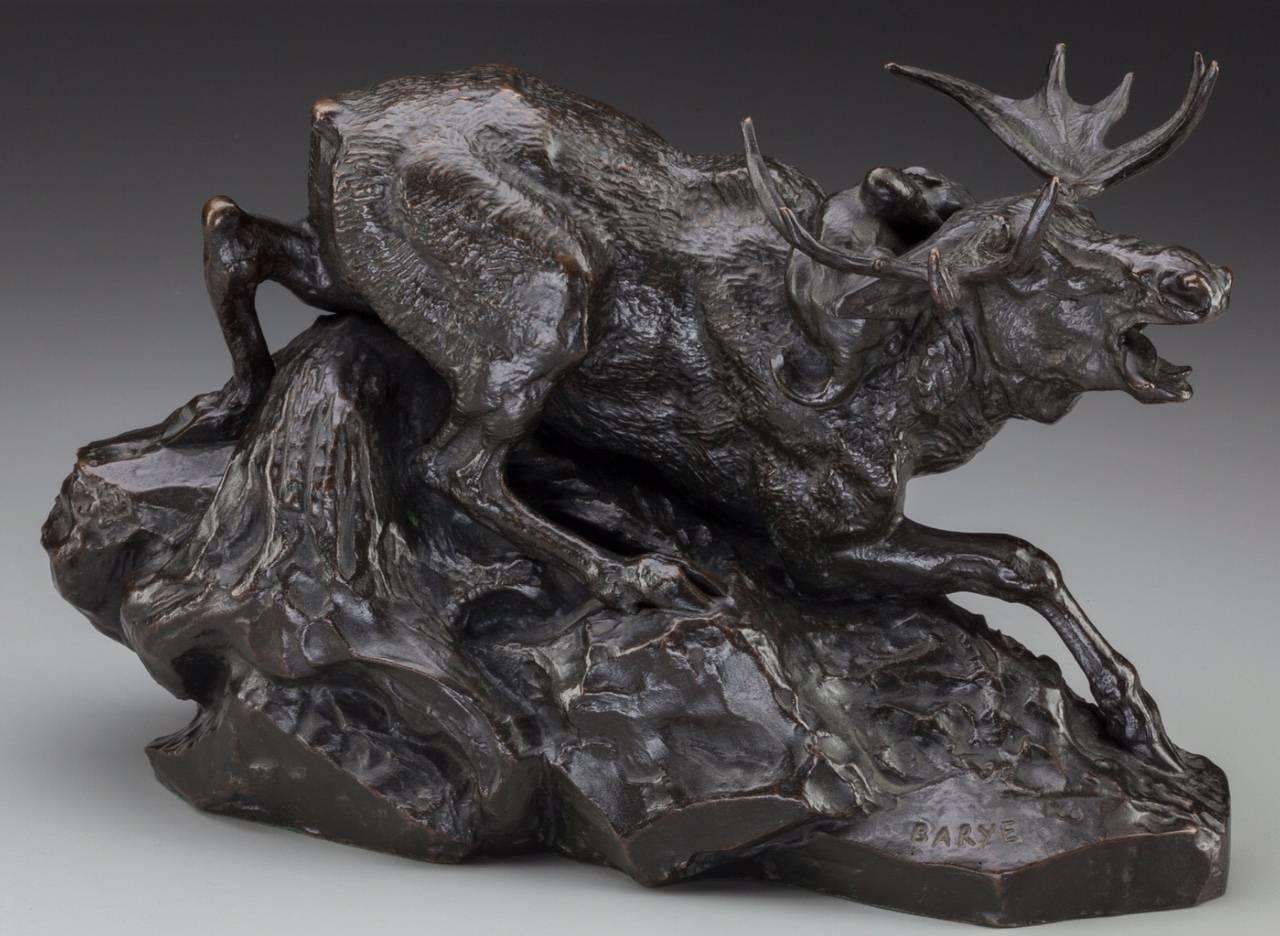
About the Seller
4.9
Gold Seller
Premium sellers maintaining a 4.3+ rating and 24-hour response times
Established in 2000
1stDibs seller since 2015
444 sales on 1stDibs
Typical response time: 12 hours
- ShippingRetrieving quote...Shipping from: Dallas, TX
- Return Policy
Authenticity Guarantee
In the unlikely event there’s an issue with an item’s authenticity, contact us within 1 year for a full refund. DetailsMoney-Back Guarantee
If your item is not as described, is damaged in transit, or does not arrive, contact us within 7 days for a full refund. Details24-Hour Cancellation
You have a 24-hour grace period in which to reconsider your purchase, with no questions asked.Vetted Professional Sellers
Our world-class sellers must adhere to strict standards for service and quality, maintaining the integrity of our listings.Price-Match Guarantee
If you find that a seller listed the same item for a lower price elsewhere, we’ll match it.Trusted Global Delivery
Our best-in-class carrier network provides specialized shipping options worldwide, including custom delivery.More From This Seller
View AllPair of 18th Century Japanese Edo Period Lacquered Samurai Iron Stirups
Located in Dallas, TX
18th century Japanese Edo period Lacquered Samouri Iron stirups with original wooden lacquered insoles. Truly a beautiful pair of Japanese ...
Category
Antique Late 18th Century Japanese Edo Metalwork
Materials
Iron
Pair Chinese 18th Century Late Ming Bronze Archaistic Gu Vases
Located in Dallas, TX
Near Pair of Chinese Archaic bronze Gu vases. 18th century Late Ming Period,
Measures: Height: 11.4 inches. Diameter: 6.4 Inches
Condition: Very good with ...
Category
Antique Mid-18th Century Chinese Archaistic Vases
Materials
Bronze
Green Glazed Shiwan Pottery Teapots Qing Dynasty, 'Pair'
Located in Dallas, TX
A near pair of 19th century Sancai green glazed pottery teapots. Both with yoked handles, spouts and lids. Both also have the Republic era official government wax red seal signifying...
Category
Antique 1880s Chinese Chinese Export Pottery
Materials
Pottery
Ming Dynasty Bronze Gu Beaker Vase
Located in Dallas, TX
Chinese bronze vase, Gu, the trumpet-shaped upper section cast with four blades filled with archaic designs. Center and lower sections depicting Toadies with very intricate backgroun...
Category
Antique 17th Century Chinese Ming Vases
Materials
Bronze
Tang Dynasty Glazed Pottery Ox Blood Jars 618-907 AD
Located in Dallas, TX
C. AD 618-907. Tang Dynasty.
Two beautiful terracotta pottery jars covered with a ox blood to chestnut-coloured glaze. The bulbous bodies taper into a slender neck with flared rim....
Category
Antique 15th Century and Earlier Chinese Tang Jars
Materials
Pottery
Pair of Han Dynasty Pottery Horses and Equestrian Riders
Located in Dallas, TX
A wonderful pair of Ex Sotheby’s painted Polychrome Equestrian Horse and Riders made from gray pottery, Presents beautifully and guaranteed authentic with provenance and COA.
Measures: Height 11.5 inches and width 11 inches
Condition: Possible professional restorations but not detectable.
Provenance: Sotheby’s London. 16th November, 1999. Lot 12 (2 of 4 horses in that lot).
Sotheby’s New York, NY September 14, 2019.
The importance of the horse in the history and culture of China can be viewed, in part, through the artistic legacy of this great civilization. In sculpture, painting, and literature, horses were glorified and revered. Horses were believed to be related to mythological dragons, reflecting their sacred status within society. During the unification of China under the Han Dynasty, bands of mounted nomadic warriors from the north threatened the country. In order to thwart their attacks, the Chinese sought to import stronger, faster steeds from Central Asia (as opposed to the Mongol ponies used by the invaders), eventually leading to the creation of the Silk Road. This small sculpture of a mounted soldier reveals the crucial military role of the horse. When compared to the diminutive stature of the rider, the importance of the horse becomes readily apparent. This creature provided security and strength, allowing the Empire to secure its borders and expand its influences across Central Asia. The magnificent regalia of the horse, including a brilliantly painted saddle in red and green/gold, reflect the respect this animal received. The warrior as well is gorgeously decorated with a painted red tunic and gray chest...
Category
Antique 15th Century and Earlier Chinese Chinoiserie Animal Sculptures
Materials
Pottery
You May Also Like
Pair of Japanese Abumi Stirrups
Located in PARIS, FR
Pair of stamped brass stirrups decorated with Hashizuka, Ito and Manabe Mons.
Japan - Edo (1615-1868), 18th century.
Height: 10.24 in. (26 cm), length: 12.6 in. (32 cm), width 4.72 in. (12 cm)
As in Western culture, the culture Japanese stirrups were part of traditional accessories...
Category
Antique Late 18th Century Japanese Metalwork
Materials
Brass
$7,195 / set
Antique Edo Period Japanese Samurai Iron Stirrups with Brass or Bronze Inlay
Located in Centennial, CO
A pair of antique Edo period (1603–1867) Japanese Samurai Abumis (stirrups for horseback-riding) expertly crafted out of cast iron with brass or bronze inlay in the form of a stylize...
Category
Antique 18th Century Japanese Edo Metalwork
Materials
Brass, Bronze, Iron
Pair of Japanese Edo Period Iron Silver Inlaid Red Lacquered Stirrups 'Abumi'
Located in New York, NY
A Pair of Japanese Edo Period (1603–1867) iron, silver inlaid, and red lacquered stirrups (Abumi). Each of typical form, made of iron with silver inlay on the front with floral bloss...
Category
Antique 1690s Japanese Edo Metalwork
Materials
Silver, Iron
Edo Period Spectacular Samurai Abumi, Stirrups Inlayed with Silver
Located in Fukuoka, JP
Spectacular Samurai Stirrups
These spectacular samurai stirrups are a fine example of Japanese craftsmanship. They are made of iron with silver and b...
Category
Antique 18th Century Japanese Edo Arms, Armor and Weapons
Materials
Silver, Bronze
Pair of Exceptional Daimyo Hand Warmers
Located in Hudson, NY
The daimyo were the ruling class of land owners, subordinate to shogun, who formed around the 10th century and fell out of power in the 19th century. Daimyo families tended to be wealthy and could commission artwork or decorative pieces. This pair of 17th century hibachi are black and gold lacquer with designs of Uji Bridge...
Category
Antique Late 17th Century Japanese Edo Lacquer
Materials
Lacquer
$65,000 / set
Exceptional Pair of Japanese Hibachi with Makie Lacquer – Edo to Meiji Period, 1
Located in Fukuoka, JP
A superb and one-of-a-kind pair of large Japanese hibachi (charcoal braziers), crafted from kiri wood and richly decorated with makie gold lacquer. The surfaces are adorned with eleg...
Category
Antique 19th Century Japanese Edo Antiquities
Materials
Wood, Lacquer
More Ways To Browse
Edo Japan
Japanese 19th Century Lacquer
Antique Lacquer Painting
Edo Wood
Japan Samurai
18th Century Reproduction
18th Century Reproduction Furniture
Japanese Samurai Art
Japan Edo Lacquer
18th Century Swan
Antique Japanese Rings
Antique Japanese Cup
Japanese Edo Period Items
Antique Japanese Shelf
Edo Period Bronze
Silver Stirrups
Ming Dynasty Bronze
Han Dynasty Bronze
